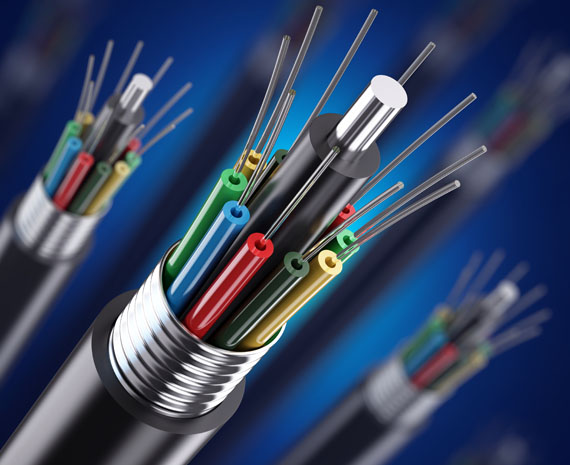Optical cables are essential components of modern telecommunications and networking systems, enabling high-speed data transmission over long distances. They are used to connect devices such as routers, switches, servers, and data centers, as well as to provide internet connectivity to homes and businesses. In this article, we will discuss the characteristics of optical cables, including their construction, types, and applications.

Construction of Optical Cables
Optical cables consist of several layers of materials, each serving a specific purpose in protecting the fiber optic core and ensuring efficient data transmission. The construction of optical cables can vary depending on the specific application, but generally consists of the following layers:
Fiber Optic Core: The fiber optic core is the central component of the optical cable, where the light signal is transmitted. It is made of either glass or plastic and is surrounded by a cladding layer that helps guide the light signal.
Buffer Coating: The buffer coating is a protective layer that surrounds the fiber optic core, preventing damage to the fiber during installation and handling.
Strength Members: The strength members are typically made of aramid or fiberglass and provide support and protection to the fiber optic core. They also help prevent the cable from stretching or breaking under tension.
Jacketing: The jacketing layer is the outermost layer of the optical cable and provides protection against environmental factors such as moisture, heat, and abrasion.
Types of Optical Cables
There are several types of optical cables available, each designed for specific applications and environments. Some of the most common types of optical cables are:
Single-mode Fiber (SMF): Single-mode fiber is used for long-distance transmission and provides high bandwidth. It has a smaller core diameter and uses a laser light source for data transmission.
Multi-mode Fiber (MMF): Multi-mode fiber is used for short to medium-distance transmission and provides lower bandwidth than single-mode fiber. It has a larger core diameter and uses an LED light source for data transmission.
Tight-Buffered Cable: Tight-buffered cable is used for indoor applications, such as connecting devices in a data center or office environment. It has a thin buffer coating around each fiber, providing added protection against damage.
Loose-Buffered Cable: Loose-buffered cable is used for outdoor applications, such as connecting devices across long distances or underground. It has a thicker buffer coating around each fiber, providing additional protection against moisture and other environmental factors.
Characteristics of Optical Cables
The characteristics of optical cables are crucial in determining their performance and suitability for specific applications. Some of the most important characteristics of optical cables are:
Bandwidth: The bandwidth of an optical cable refers to the amount of data that can be transmitted over the cable at a given time. Single-mode fiber provides higher bandwidth than multi-mode fiber, making it more suitable for long-distance transmission.
Attenuation: Attenuation is the loss of signal strength as the light signal travels through the cable. Optical cables have low attenuation, which allows them to transmit data over long distances without significant signal loss.
Dispersion: Dispersion refers to the spreading of the light signal as it travels through the cable. Optical cables can experience different types of dispersion, including chromatic dispersion and modal dispersion.
Cable Diameter: The diameter of an optical cable can vary depending on the number of fibers and the specific application. Smaller diameter cables are typically used for indoor applications, while larger diameter cables are used for outdoor applications.
03-21
202502-12
202509-12
202409-05
202408-16
202408-07
202408-06
202408-02
202407-30
202407-29
2024
